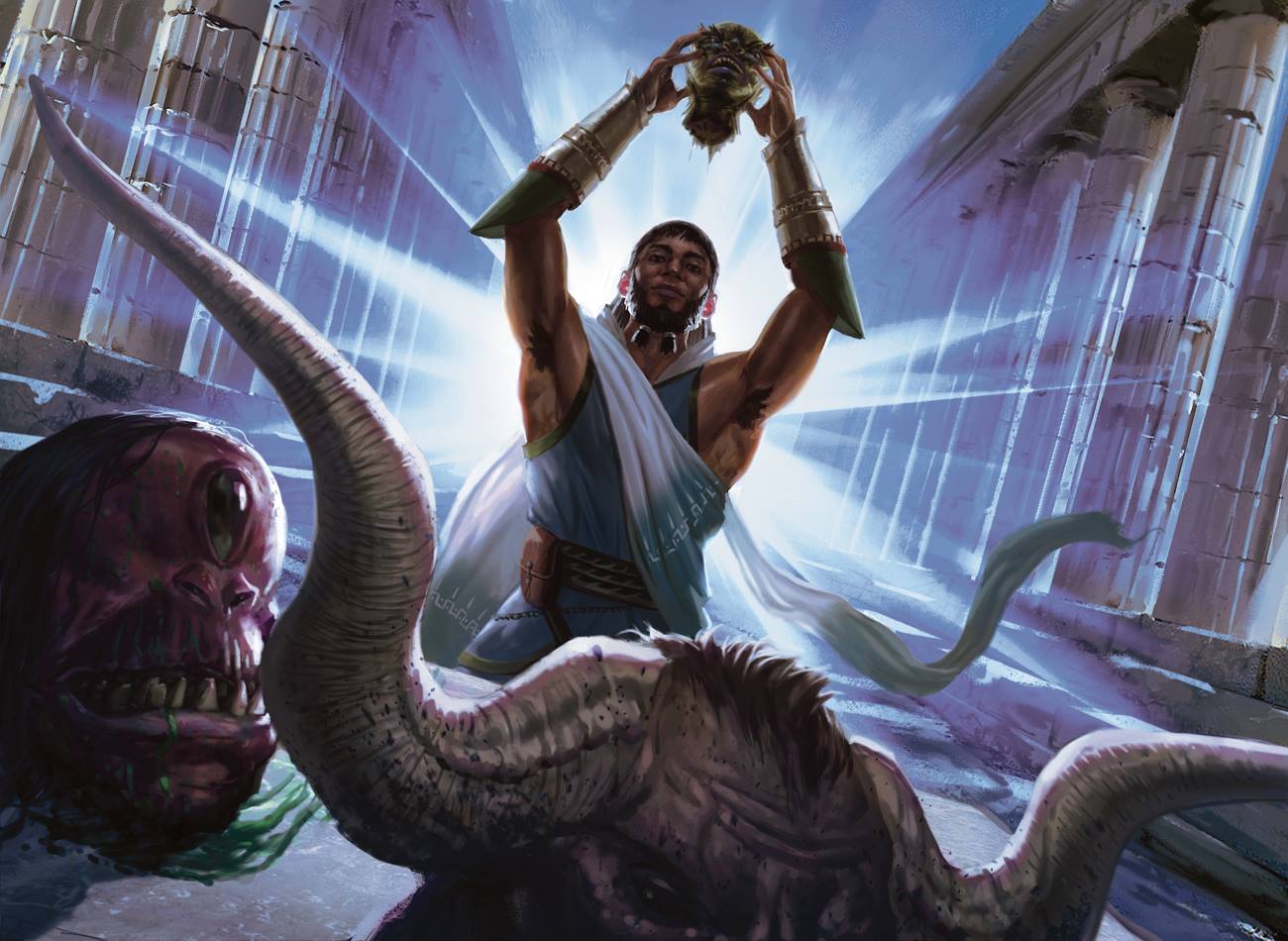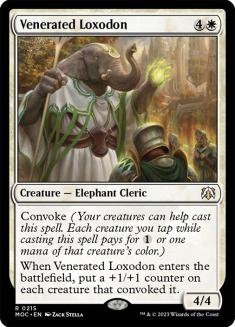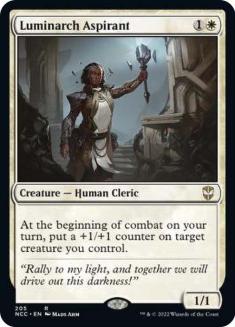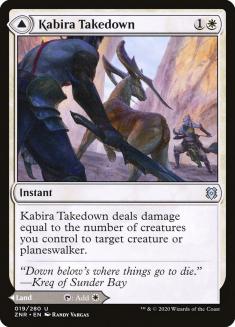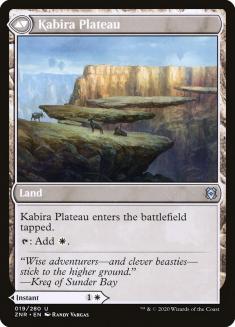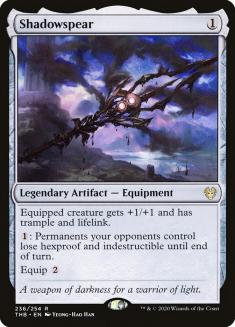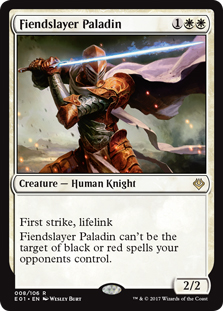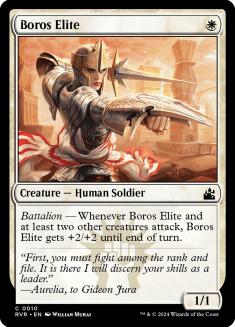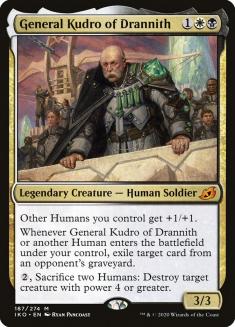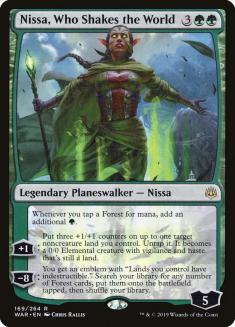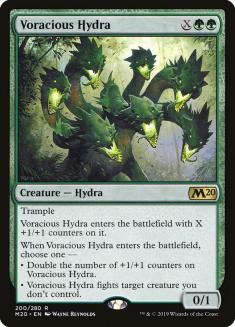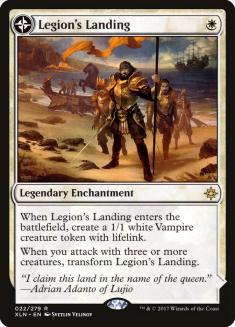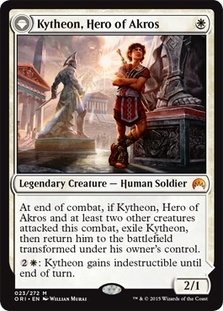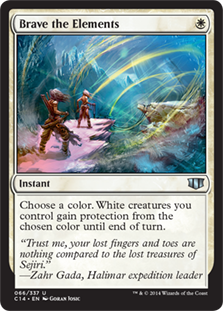Pioneer is in an interesting spot right now. With fewer eyes on the format given the emphasis on online play since the pandemic began, the metagame isn’t as ruthlessly iterated as it otherwise would be. This creates a metagame that isn’t as stable, allowing powerful decks to fall to the fringes, only to re-emerge some time later when people finally wise up and ask themselves why did everyone stop playing that again?
This is exactly what happened to Boros Wizards and Mono-Green Devotion in Pioneer. These were premier decks over the summer, even with the companion nerf hitting Boros Wizards pretty hard. And yet, over much of this fall, you rarely saw either archetype put up top finishes in Challenges or other Magic Online events.
As much as we like to think of ourselves as objective in our dismissal of results-oriented thinking, we all rely on tournament results to gain a picture of the metagame, and that clouds our judgment of which decks are viable and which ones aren’t. No one has the time to properly test every potential deck in a given format, much less the multiple formats, so we all need a crutch. As Andrew Elenbogen once said:
Competitive Magic is the art of correctly generalizing from sample sizes too small to draw real conclusions.
So it appears that the Pioneer metagame was led astray in recent months. But you can only keep a good deck down for so long, and both archetypes loudly announced their return to the metagame during a recent Kaldheim Championship Qualifier, where our fearless leader Cedric Phillips lit up the field with Boros Wizards, splitting the finals with noted streamer AspiringSpike on Mono-Green Devotion, both earning a qualification.
Since then, these two decks have been right back at the top of the metagame, picking up right where they inexplicably left off. So, as the stubborn aged millennial that I am, I had to work on my Orzhov Humans list to adapt to the changing metagame. Today I’m going to go over my updated list and cover these two newly relevant matchups in some detail, so you too can be prepared to face them with your trusty white aggro deck.
Creatures (34)
- 4 Boros Elite
- 4 Soldier of the Pantheon
- 2 Kytheon, Hero of Akros
- 4 Thraben Inspector
- 4 Thalia's Lieutenant
- 4 Dauntless Bodyguard
- 3 Venerated Loxodon
- 2 Giant Killer
- 3 General Kudro of Drannith
- 4 Luminarch Aspirant
Lands (19)
Spells (7)
Sideboard

The changes here are subtle, but important. This deck is linear and proactive, so you can’t deviate much from the main gameplan, but as I oft repeat in this space, Magic is a game of small edges.
First, in the maindeck I’ve cut one each of Venerated Loxodon, Dire Tactics, and Caves of Koilos for the fourth Luminarch Aspirant, a Kabira Takedown, and the second basic Plains.
On the Loxodon-for-Aspirant swap, I’d been contemplating the change for a while. I was hesitant to trim Venerated Loxodon in part because of my bias towards the card. It’s among my favorite printed in the last five years, and I think it’s underappreciated because the hyper-aggressive decks it belongs in aren’t popular among the masses. More than any other card, it elevated white aggro decks in Standard during the Guilds of Ravnica era and it’s certainly powerful enough to see play in older formats if it has the right home like this one.
But there are a few issues with it making the leap from Standard to more powerful formats. First is that this deck can’t afford to play a card like History of Benalia, which helps to ensure a powerful Loxodon even in the face of significant early disruption. If you stumble or your opponent has multiple Fatal Pushes or a Turn 3 Anger of the Gods on the play, Venerated Loxodon can languish in your hand. These things happened in Standard too, but not as often. And there also wasn’t nearly the same competition for Anthem effects that there is in Pioneer or Modern.
Second is the downside of drawing multiple copies. In Pioneer, there aren’t a lot of matchups where creature sizing is so important that you can take two turns off from attacking. Against decks with piles of planeswalkers or burn spells, closing the game quickly is what’s important. Taking a turn off for the first Venerated Loxodon has been perfectly fine in my experience, but the second is at best overkill, and at worst sacrifices too much of your clock to be worthwhile. Luminarch Aspirant has much lower diminishing returns, so it deserves the extra slot.
The Kabira Takedown I wish I could take credit for, but actually came from browsing results. MTGO player juzam_gin, who has put up a handful of results with the deck, had it in a recent list of theirs and it intrigued me enough that I gave it a try. Suffice it to say that I came away impressed.
I actually play it as a land more often than a spell, and even entering tapped it’s nice to have an effective twenty lands in the deck when you absolutely need to come out quickly. This is especially true in the Boros Wizards and Mono-Green Devotion matchups, which are won and lost in the first four or five turns. Later in the game it still functions as a fine removal spell. It’s a touch worse against Boros Wizards if you have to use it early but ideally you’ll save it for their Lurrus. It’s much better against Mono-Green Devotion, however, where the ability to target a planeswalker is quite valuable.
Lastly, the second Plains is a concession to Boros Wizards. I could even see cutting another painland if need be, because the deck doesn’t need much black mana, but you’d prefer to avoid playing Grimclimb Pathway whenever possible.
The Sideboard
The new changes here are the move towards more copies of Fatal Push and the addition of Shadowspear. The fourth Fatal Push is a concession to the reality that you need the lowest curve possible against both Boros Wizards and Mono-Green Devotion. Being able to cast two creatures and interact with their Turn 1 play is critical to gain an early advantage in the sideboard games. I’m sacrificing equity against Uro, Titan of Nature’s Wrath to make these changes, but given the resurgence of these two decks, I think you benefit on the balance. The exact split on removal will always be in flux because the metagame is a moving target.
Shadowspear is the new addition, obviously targeted towards Boros Wizards. This slot used to house Apostle of Purifying Light to help against Mono-Black Aggro, but that deck’s popularity has plummeted, so I knew they needed to go. My first thought was to search for whatever red hoser that white had access to in Pioneer, but to my shock I found none.
Rant Incoming:
Seriously, what gives?! Since the dawn of time, white decks have had cards that shut down red decks, from Kor Firewalker and Burrenton Forge-Tender to the classic Circle of Protection: Red. And I have to make do with Fiendslayer Paladin? This is my birthright as a white aggro player. I’m out here trying to beat Uro with a pile of glorified Savannah Lions, and now I have to actually try against red decks? You ask too much.
You know, when I was young and playing red decks I had to beat Chill with Goblin Cadet and Firebolt. And now you kids think you can just go around with your Boros Charms and Monastery Swiftspears while I can’t even get a pro-red Human for two mana. What is the world coming to?
So I begrudgingly put two Fiendslayer Paladins in my sideboard, but it was too much of a liability against Chained to the Rocks, and sometimes too slow, especially against a draw that was heavy on prowess creatures. Shadowspear looks awkward on paper because your deck is mostly small creatures, but you often trade early in the game to keep your life total high, eventually looking to turn the corner with one or two creatures you’ve pumped multiple times with your various Anthem effects. Those creatures are great to equip with Shadowspear to get you out of burn range as you finish them off.
I have some hope for the card against Mono-Black Aggro as well, since it helps you race when the battlefield trades to your couple of creatures against their recursive threats or helps your smaller creatures attack into Spawn of Mayhem and Rankle, Master of Pranks. But with how little I’ve played of that matchup in recent weeks, I haven’t formed a firm opinion. At the very least, the metagame complexion is such that you want to bias toward red and away from black, so Shadowspear gets the nod.
The Boros Wizards Matchup
The Boros Wizards matchup is all about playing a tight balancing act. Unless you have a great draw on the play, I suggest assuming a more controlling posture in the early-game, trading off creatures to protect your life total, while trying to amass two threats that they can’t easily remove with burn. Those threats will then attempt to end the game before they draw the necessary burn off the top to kill you.
Executing this gameplan means timing your Anthem effects well. You don’t want to lose a Luminarch Aspirant before you’ve had a chance to trigger it at least once, and you want to get maximum value from your Thraben Inspectors. You can also take a little extra damage in order to set up Venerated Loxodon, whose 4/4 body is excellent in the matchup.
Exactly how much damage you can take to set up your own battlefield is a matter of assessing how strong their hand is, and comes with practice. By rule of thumb, you should try to stabilize at a number that is one above a multiple of three, since their burn spells represent three damage on average. If you can get one extra point to play around one of those burn spells being a Boros Charm, then great, but that’s a luxury you often can’t afford.
When it comes to which creatures to pump, I like to go for the higher-starting-toughness targets since they get out of burn range fastest. Dauntless Bodyguard and Soldier of the Pantheon also trade easiest for the prowess creatures, so while it seems counterintuitive to play defense with them and offense with Thraben Inspector, it’s the tactic that least exposes you to their burn spells.
Once you have your battlefield set up, you want to close the game quickly. Brave the Elements comes in handy here since, once your creatures are dominant, they like to use Lurrus to recur chump blockers to buy time. This plan is especially good if they’re recurring Viashino Pyromancer, and without any form of evasion and removal in Game 1, you’re pretty vulnerable to it outside of Brave.
With the above list, I’d sideboard like this against Burn:
Out:
In:
When you’re trading off aggressively, Boros Elite becomes a liability, and Venerated Loxodon and General Kudro are the worst Anthem effects, because Loxodon opens you up to a big attack while Kudro trades down against their three-damage burn spells. You’d rather draw one of each than two of either so cutting one makes the most sense.
After sideboarding, your Fatal Pushes help you to be more aggressive and offer much needed answers to Lurrus. Without Lurrus, their deck is rather poor at playing attrition, so any burn spell you can trade for a creature is a win.
The Mono-Green Devotion Matchup
I was excited at the prospect of this matchup, since without Walking Ballista they are light on interaction for early creatures, but it’s been surprisingly difficult. The deck is very explosive, and once they gain control of the battlefield, it’s hard to close. I thought Brave the Elements would make closing rather easy, but Nissa, Who Shakes the World making colorless blockers means that’s not as reliable as I would like.
Nissa is the key card for them as a result, since it’s the only one of their planeswalkers that really takes over the battlefield. Karn, the Great Creator finding Skysovereign, Consul Flagship can win games, but isn’t nearly as reliable because it takes a lot more resources to both set up and keep pushing through.
Voracious Hydra is their key bridge card to the planeswalkers, often cast at four mana to represent a removal spell plus a body that can be tough to attack through without at least offering a trade.
Ideally I’d like to take my time to create a huge battlefield of creatures so that their bridge threats can’t trade easily, but doing so leaves you vulnerable to Nykthos, Shrine to Nyx enabling a brutal turn from them. So it’s another balancing act.
Much like against Boros Wizards, you have to judge how strong their hand is and play accordingly. The more they’re trying to buy time with Llanowar Visionary and Voracious Hydra, the more you can afford to slow down and leverage your Anthem effects to take over the battlefield. The closer they are to creating a battlefield full of planeswalkers, the more aggressive you have to get, hoping to keep them off Nissa long enough for Brave to close it out.
I sideboard as follows in the matchup:
Out:
In:
The absolute best thing you can do in the matchup is keep them off their mana creatures. If they have to cast their spells on-curve, their deck is much less explosive, and you should have time to establish a dominant battlefield. Fatal Push taking care of Voracious Hydra is also a huge benefit, and holding up a mana for a well-timed bluff can be key, though you shouldn’t sacrifice early development to do so.
Cutting Dire Tactics from the sideboard does leave you vulnerable to Elder Gargaroth, which some lists play, but you still have Giant Killer against it, and potentially Brave to end the game when they tap out, so I’m not as concerned about it despite its power. It’s more important to come out strong on the first few turns.
With the pedigree that Boros Wizards and Mono-Green Devotion have, I don’t expect them to disappear again. The metagame will of course adapt to their renewed presence, and has over the last couple of weeks, but both are powerful and proactive, so they aren’t particularly dependent on a favorable metagame for their success. I for one am looking forward to playing against fewer decks with maindeck Anger of the Gods and Supreme Verdict though.

